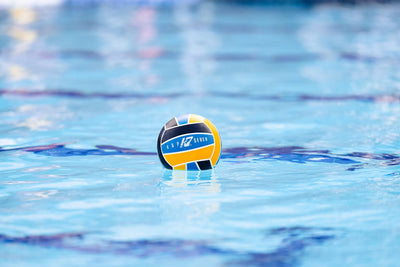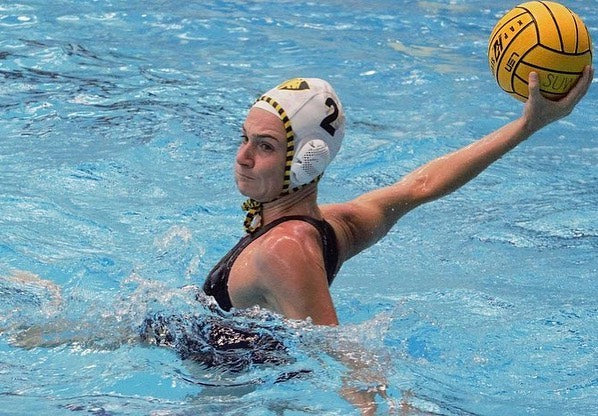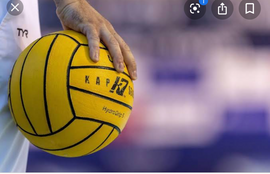Water polo is an exhilarating sport that demands strength, precision, and skill. And at the heart of this thrilling game lies the water polo ball, a crucial piece of equipment that can greatly impact a player's performance and the outcome of the game. In this article, we'll delve into the different sizes of water polo balls and explore the fascinating physics behind their movement, especially regarding shooting and passing.
Let's start with the sizes. Water polo balls come in five different sizes, each tailored for specific age groups and genders.
Size 1 is the smallest, perfect for our youngest players aged eight and under. It measures around 20 inches in circumference and weighs between 14 and 16 ounces.

Size 2 is slightly larger, designed for players aged 8 to 10. With a circumference of about 22 inches and weighing between 16 and 18 ounces, this ball offers the right fit for these intermediate athletes.

For our young players aged 10-13, we have Size 3. This size measures 24 inches in circumference and weighs between 18 and 20 ounces, providing a ball that suits their developing skills.

As players progress into the advanced stage, Size 4 becomes their trusted companion. This standard ball is used for women in international competitions and for players aged 14 and up. Size 4 boasts a circumference of 26 inches and weighs between 20 and 22 ounces, offering the perfect balance for professional-level play.

Lastly, we have Size 5, the largest of the five sizes. This ball is used in men's professional and Olympic-level play, as well as for boys aged 15 and up. With a circumference of 27 inches and weighing between 21 and 22 ounces, it is a testament to the athleticism and prowess of elite players.

Now, let's dive into the captivating physics behind these water polo balls. The shape, size, and texture of the ball impact its movement through the water and its trajectory when thrown or shot. The ball's texture creates turbulence in the water as it moves, leading to changes in speed and direction. This turbulence adds an element of challenge to passing and shooting, as players must factor in the effect it has on the ball's trajectory.
The weight of the ball also plays a crucial role. A heavier ball sinks faster, making accurate passing and shooting more challenging. However, a heavier ball often provides better grip and control, offering advantages to players who have mastered its weight.
Moreover, the size of the ball influences its trajectory. Larger balls create more drag in the water, causing them to slow down more rapidly and follow a more predictable path. On the other hand, smaller balls generate less drag, making them harder to control but more difficult for the opposing team to intercept.
Additionally, we can't forget the intriguing Bernoulli Principle, which applies to water polo balls just as it does to air or gases. This principle states that as the speed of a fluid increases, its pressure decreases, and vice versa. When a water polo ball is in motion, it creates flow around itself, resulting in areas of high and low pressure according to the Bernoulli Principle. These pressure differences can produce lift, curving or deviating the ball's path through the water. The Bernoulli Principle's impact on ball movement varies depending on the ball's surface characteristics. For a smooth ball with no texture or grip, the water flow around it remains relatively undisturbed. As a result, the pressure differences generated by the Bernoulli Principle are less pronounced. This means that a smooth ball may experience fewer aerodynamic effects, resulting in a more predictable trajectory through the water.
In contrast, a water polo ball with more grip and roughness enhances the interaction with the surrounding water. The textured surface disrupts water flow, creating more turbulent conditions and generating significant pressure differences according to the Bernoulli Principle. These enhanced pressure differences can impart additional lift and create deviations in the ball's path. Skilled players can utilise this effect to their advantage, employing strategies like curve shots to outmaneuver defenders and surprise goalkeepers.
The level of grip on a water polo ball is a key factor influenced by the ball's quality. Higher-quality balls often feature textured or rough surfaces, allowing for enhanced grip and control. This superior grip is achieved using top-notch rubber materials, which are pricier than the plastic used in lower-quality balls. The improved grip enables players to handle the ball more effectively, pass more accurately, and shoot with enhanced precision. Moreover, high-quality balls tend to be more durable, maintaining their grip and overall performance over time, making them a worthwhile investment for serious players.
In conclusion, the water polo ball is an essential element of this dynamic sport. Understanding the different ball sizes and the physics behind their movement can greatly benefit players looking to improve their shooting and passing skills. Additionally, investing in a high-quality ball with superior grip and durability can elevate a player's performance and longevity in the game. So, whether you're a beginner or a seasoned player, choosing the right water polo ball tailored to your age and skill level can make all the difference in your quest for aquatic excellence.



